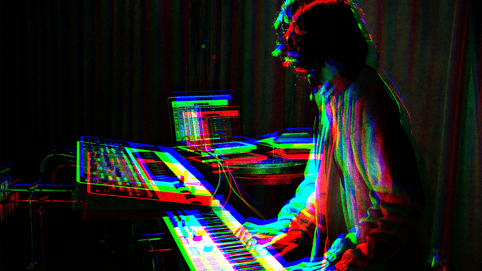When starting with digital video editing these days, there are more apps and platforms to consider now than ever before. In the early days of digital video editing, there were only a few options. However, now, with the rise of smartphone filmmaking and video editing phone apps, there’s almost an endless number of possibilities.
Still, if you’re looking to seriously consider video editing, there are three top choices that most professional (and even amateur) video editors will recommend. Your options are primarily focused on Adobe Premiere Pro, Apple Final Cut Pro, and Blackmagic Design DaVinci Resolve.
And while each option is great in its own right, as well as all quite similar in many ways, Adobe Premiere Pro remains a top option of the three for most simply thanks to its decade-long run of top popularity and support within the complete Adobe Creative Cloud ecosystem.
If you’re looking to get started with Adobe Premiere Pro today, we’re here to help you get up and running. We’re also going to go over some of the basic steps for how to add music in Premiere Pro and begin working with audio and sound effects to fill out your videos and give your content that cinematic soundtrack that it deserves.
Getting started with Premiere Pro
As mentioned before, there are no wrong choices for which video editing software is right for you. As we’ve covered in the past with guides on how to add music in Final Cut Pro and how to add music in DaVinci Resolve, the processes for adding music and working with audio is quite simple for all options.
Still, before adding music to Premiere Pro, let’s go over how you can get started with Adobe Premiere Pro in the first place. For the most direct advice, here’s a helpful article that goes over how to download and install Premiere Pro as part of Adobe Creative Cloud.
From there, Adobe offers a massive array of assets and tutorials that go over pretty much all steps of the Premiere Pro process. The Adobe Learning Center is a valuable resource for those new to Premiere Pro, offering basic guides on getting started.
If you’re someone who is looking for some direct steps to follow, this basic workflow guide can get you up and running relatively quickly. It goes over some basic workflows for opening Premiere Pro, starting a project, and assembling a sequence for the first time.
How to add music in Premiere Pro
Now that we’ve covered some basic guides for getting started with Adobe Premiere Pro, let’s go over how to add music in Premiere Pro. Here’s a basic three-step process as outlined by Adobe on its “add audio to your video” page.
Step 1: Find your audio
Start out in the Audio workspace by selecting Audio at the top of the screen or choosing Window > Workspaces > Audio. Choose Window > Media Browser to reveal the Media Browser panel.
Within the Media Browser, navigate to your audio file, right-click (Windows) or Control-click (macOS) it, and select Import to add it to the Project panel. Make sure the Ingest box is selected if you want to simultaneously copy the audio file to your project folder.
Step 2: Add the audio to your sequence
Choose Window > Project to reveal the Project panel. The audio file you just imported will be selected. Double-click it to open it in the Source panel; notice the waveform. You can play the audio file here if you wish to listen to it. Drag the audio clip to the sequence in the Timeline panel. You can drop it on any audio track below the video tracks. Trim the audio clip as you would a video clip.
Step 3: Adjust the audio track volume
Press the spacebar to play the sequence in the Program panel (upper right panel). Pressing the spacebar again stops playback. Drag the blue playhead to wherever you want playback to start.
If your audio clip is too loud or too soft compared to the rest of your sequence, you can change the volume of each audio track independently. Choose Window > Audio Track Mixer > [sequence name] to reveal the track mixer for your sequence. The playback controls at the bottom of the Audio Track Mixer panel allow you to play, stop, and even loop sequence playback. As your sequence plays or loops, move the sliders up and down to increase or decrease the volume of each individual audio track in your sequence. Slide the Master control to adjust the overall audio level.
Note: When adjusting the controls, aim to keep the audio levels within the -6 to -3 dB range, which is typically suitable for most audio projects.
Where to find music for Premiere Pro
Pretty simple, right? If anything, adding music and audio to Premiere Pro is a very easy process. The real trick is to find the right music to use in Premiere Pro. This is because, as is the case with all video editing software, unless you’re using music and audio that you created yourself, you’re going to want to find music that you’re legally allowed to use for your films, videos, and other projects.
If you’re creating videos for any commercial or for-profit purposes (or even specific non-profit or educational purposes), your best bet for your music is going to be to use royalty free music tracks that have been secured adequately through music licensing sites like Soundstripe.
If you aren’t super familiar with what royalty free music is and how it works, here are some great reads on what royalty free music means and how music rights and royalties work. In short, royalty free music from Soundstripe will be ideal, covering your work to share across all your social channels and be used for all your marketing and promotional purposes.
Our top 10 tracks of the best royalty free music for Premiere Pro
To further help you on your video editing journey, here is some of the best royalty free music for Premiere Pro to use in your edits.
1. Reckless Adventure by Lunareh
- Description: A medium-energy pop song that is best described as hopeful and happy. Piano and bass are the primary instruments in this track.
- BPM: 120
- Key: C Minor
- Listen and license here
- Description: A high-energy rock song that is best described as happy and fun. Horns and drums are the primary instruments in this track.
- BPM: 163
- Key: C Minor
- Listen and license here
- Description: A high-energy rock song that is best described as fun. Synth and guitar are the primary instruments in this track.
- BPM: 165
- Key: B Major
- Listen and license here
4. Faux Cow Chair by Tony Sopiano
- Description: A low-energy, hip-hop song that is best described as chill and inspiring. Synth and bass are the primary instruments in this track.
- BPM: 78
- Key: B Minor
- Listen and license here
- Description: A medium-energy, acoustic song that is best described as inspiring and hopeful. Guitar and acoustic guitar are the primary instruments in this track.
- BPM: 138
- Key: D Major
- Listen and license here
- Description: A low-energy, hip-hop song that is best described as chill and fun. Drums and drum kits are the primary instruments in this track.
- BPM: 90
- Key: E Minor
- Listen and license here
- Description: A high-energy pop song best described as happy and fun. Horns and guitar are the primary instruments in this track.
- BPM: 115
- Key: Bb/A# Major
- Listen and license here
8. Fuel The Fire by Adrian Walther
- Description: A medium-energy rock song that is best described as happy and fun. The guitar and electric guitar are the primary instruments on this track.
- BPM: 142
- Key: B Minor
- Listen and license here
- Description: A medium-energy, classical song that is best described as inspiring and hopeful. Piano and strings are the primary instruments in this track.
- BPM: 200
- Key: Bb/A# Minor
- Listen and license here
10. Cause For Celebration by Reveille
- Description: A medium-energy, acoustic song that is best described as hopeful and happy. The acoustic guitar and banjo are the primary instruments in this track.
- BPM: 105
- Key: G Major
- Listen and license here
These are just a few top songs from our Soundstripe library. With over 10,000 tracks and plenty of additional styles, tones, and genres to explore, you can go and listen to our full catalog of royalty free music on our Soundstripe app here.
Tips for adding music in Premiere Pro
To wrap things up, let’s quickly go over some basic tips for adding music in Premiere Pro.
- Consider downloading preview tracks to use as placeholders in your edits before deciding if a track is right for your projects.
- Be sure to check out our library of royalty free sound effects to give your videos extra impact.
- Try out Soundstripe’s AI Song Editor to instantly edit your audio track to match the length of your content and campaigns.
And that’s everything you should need to know to get started with Adobe Premiere Pro with audio and high-quality, royalty free music. So dive in and have fun!




